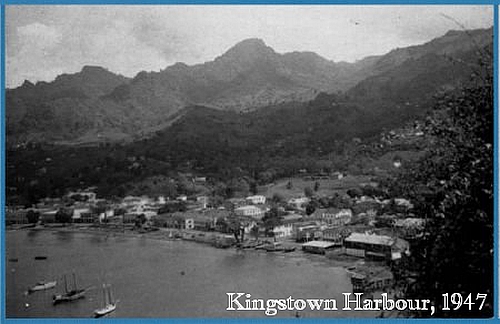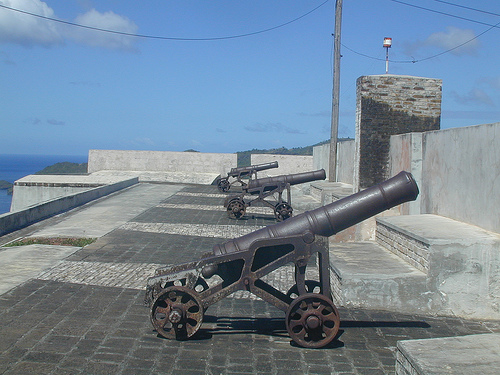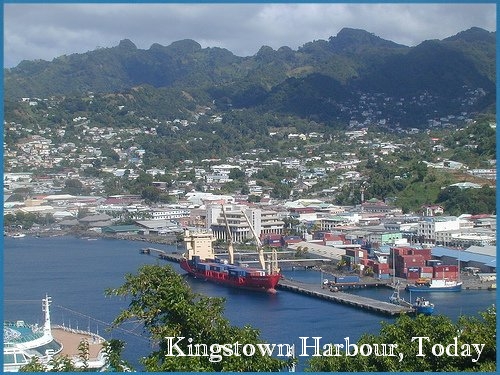The Port of Kingstown -
Legacy of a Colourful History
Port Kingstown Today
The Port of Kingstown -
Legacy of a Colourful History
St.Vincent and the Grenadines has a colourful history in maritime feats. The islands were first discovered by people from South America, the Ciboney, who made the journey in small crafts carved from the hollowed trunks of trees. The Arawak Indians followed and introduced skills in farming and fishing. These original settlers were overtaken by the warlike Caribs (hence Caribbean) as they journeyed
north though the Caribbean islands. It was the Caribs who were first encountered by European explorers in the late 15th century.
|
|
|
|
|
 |
|
The next several centuries saw the French and English battling for control of the islands. In 1675, the slave ship Palmyra sank off the coast of the Grenadines island of Bequia. The Africans who managed to swim ashore eventually mixed with the native Caribs to form the "Black Caribs". It was to be more than 200 years before the Europeans gained a foothold,
as the Black Caribs had a well earned reputation for repelling
invaders to their shores.
By a treaty between the French and the British in 1763, St.Vincent and the Grenadines was declared British.
St.Vincent and the Grenadines changed hands between the British and the French several times, finally being establish as a British colony in 1871.
|
| The Port of Kingstown held a prominent place in early development, with
the British occupying the south of St.Vincent, the distinctive Signal Station,
Fort Charlotte, then the garrison of the British Navy served to defend
the critical port from the incoming French naval ships and from inland
attacks by the Caribs supported by the French. Remaining wheeled
cannons are today still pointed inland.
|
|
|

|
St.Vincent and the Grenadines became a British associated state in 1969
and gained independence within the British Commonwealth in 1979.
|
Port Kingstown Today
An Act of Parliament in 1975 created the St.Vincent and the Grenadines
Port Authority (SVGPA), which is responsible for the running of Port
Kingstown and the other smaller harbours throughout the islands.
Over the years, as the living standards of its citizens improved in fair pace with the developing World, cargo handling and passenger travel has seen mounted increases.
Port Kingstown today serves as the gateway to the
active inter-island trade of St.Vincent and the Grenadines, with the port providing a link with the main islands of the Grenadines as well as with other destinations beyond.
|
|
|
 |
Inter-island vessels berth at the Schooner Basin, while passenger/ro-ro (roll-on/roll-off) vessels use the four-berth ferry terminal located alongside the cruise terminal. Privately owned vessels provide a vital passenger/cargo ferry service between commercial Kingstown and the gems of Grenadines islands strung to the South.
With visits by containerships focused at the Campden Park Container Port, several deepsea and regional liner services continue to use the Kingstown Port's deepwater wharf, which is 900 ft (274 meters) in length with a depth alongside of 32 ft (9.75 meters). Here the Geest Line calls from the United Kingdom with breakbulk, vehicles from Europe and containers. Outbound cargo, mainly of bananas in temporary storage, is loaded from the dedicated 2,500 square meter transit shed.
Other vessels discharge breakbulk goods with a limited amount of bulk cargo such as cement, lumber and fertilizer. In addition, vehicles - both new and second-hand right hand drive models from Japan - are received at the deepwater wharf from dedicated car carriers. Liquid cargoes - mostly petroleum products - are discharged at the Greathead Bay terminal just outside Port Kingstown.
|
|


